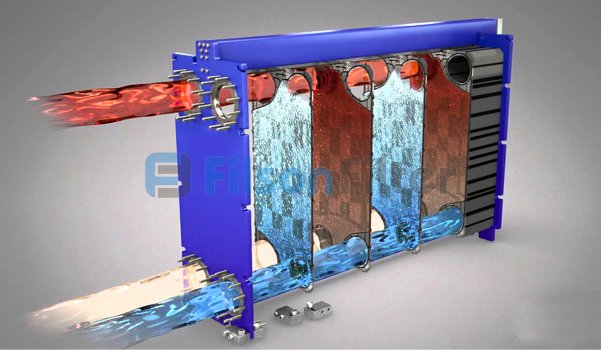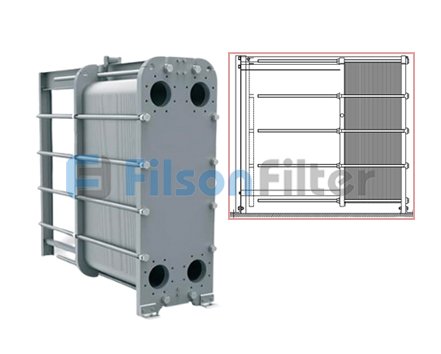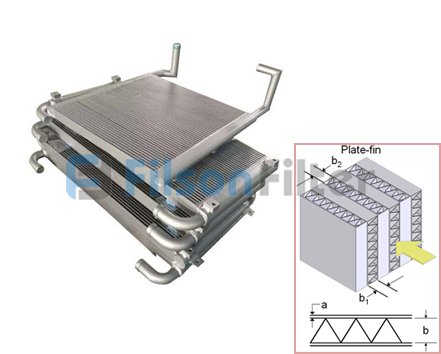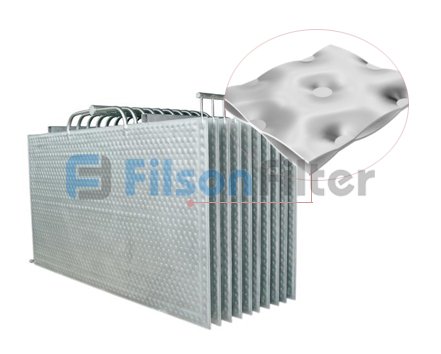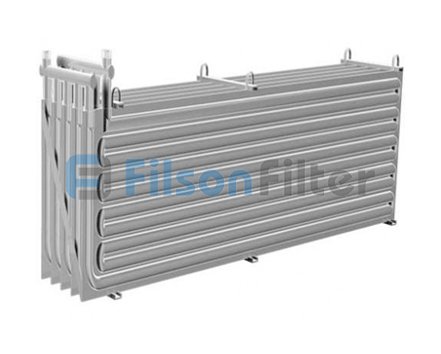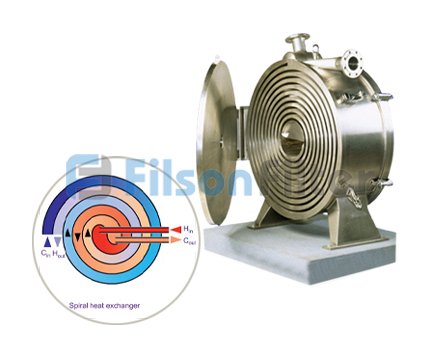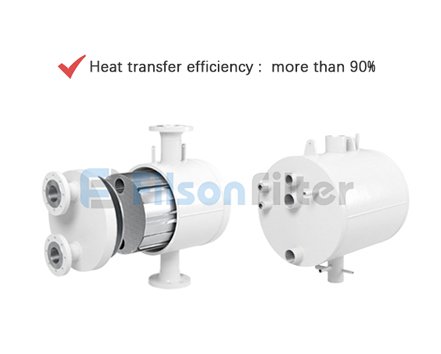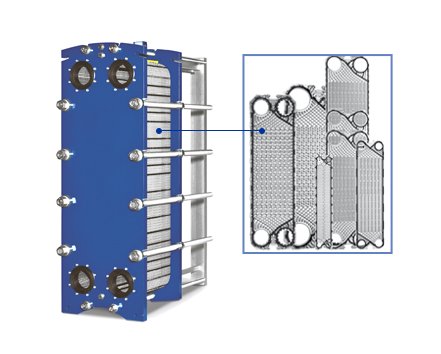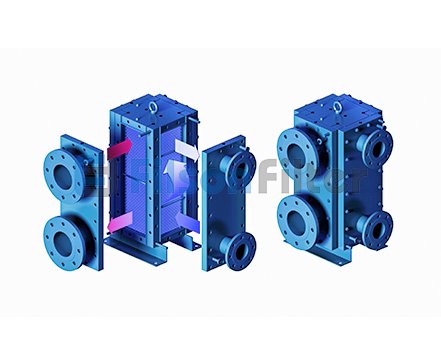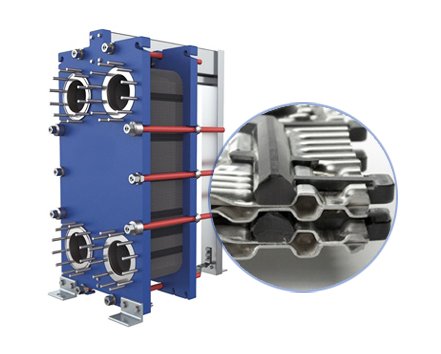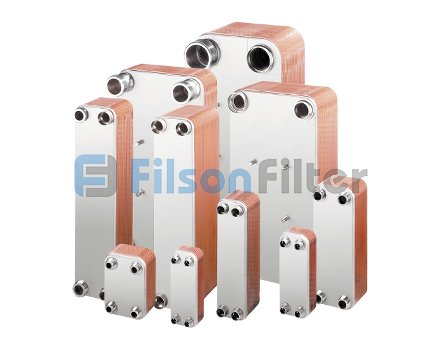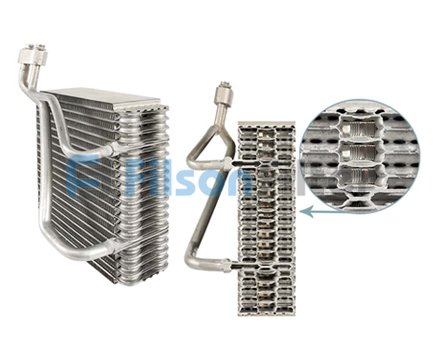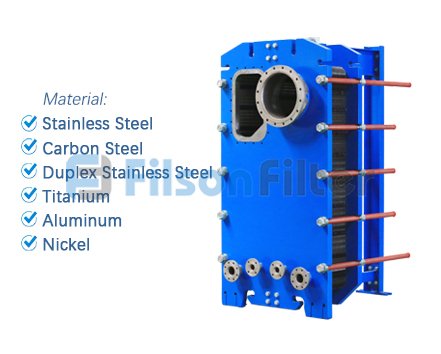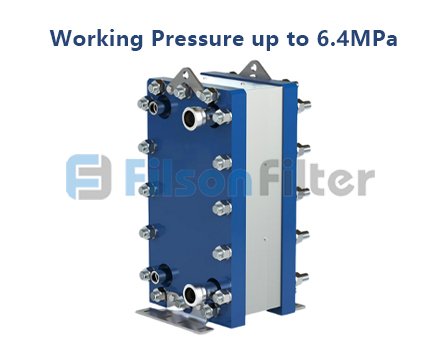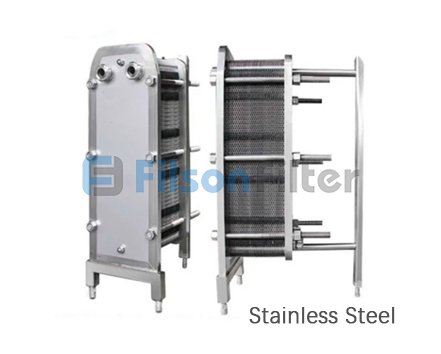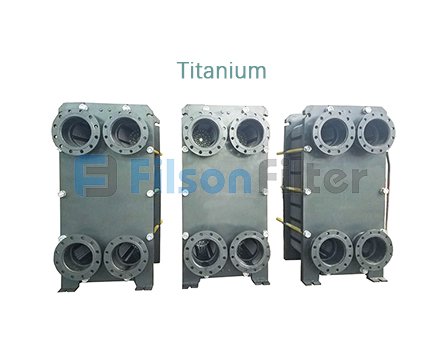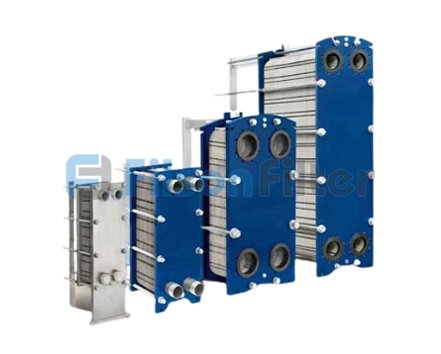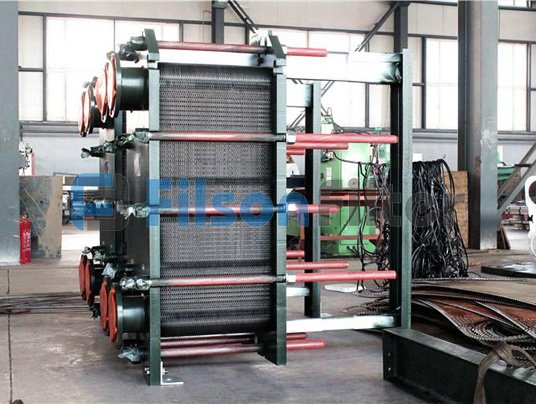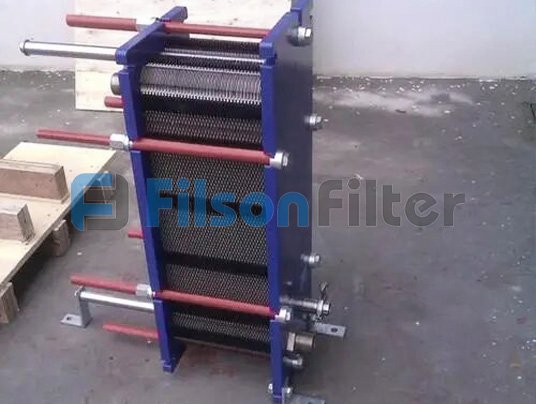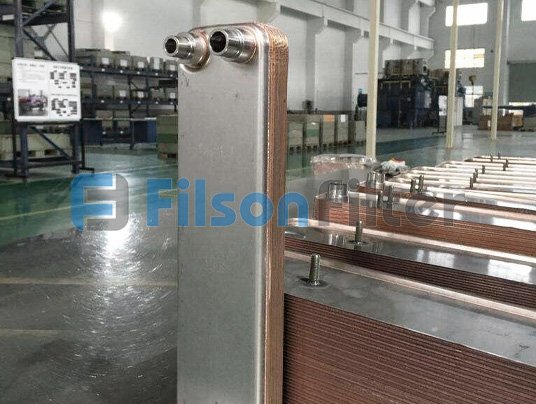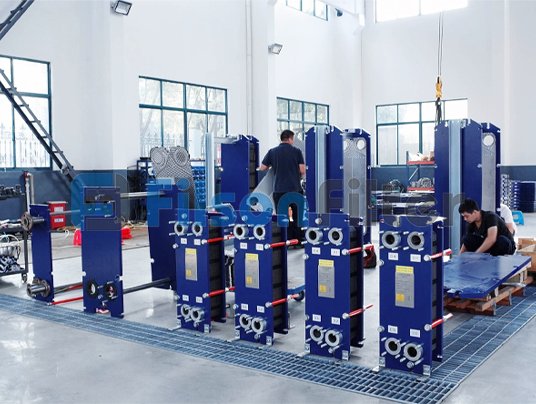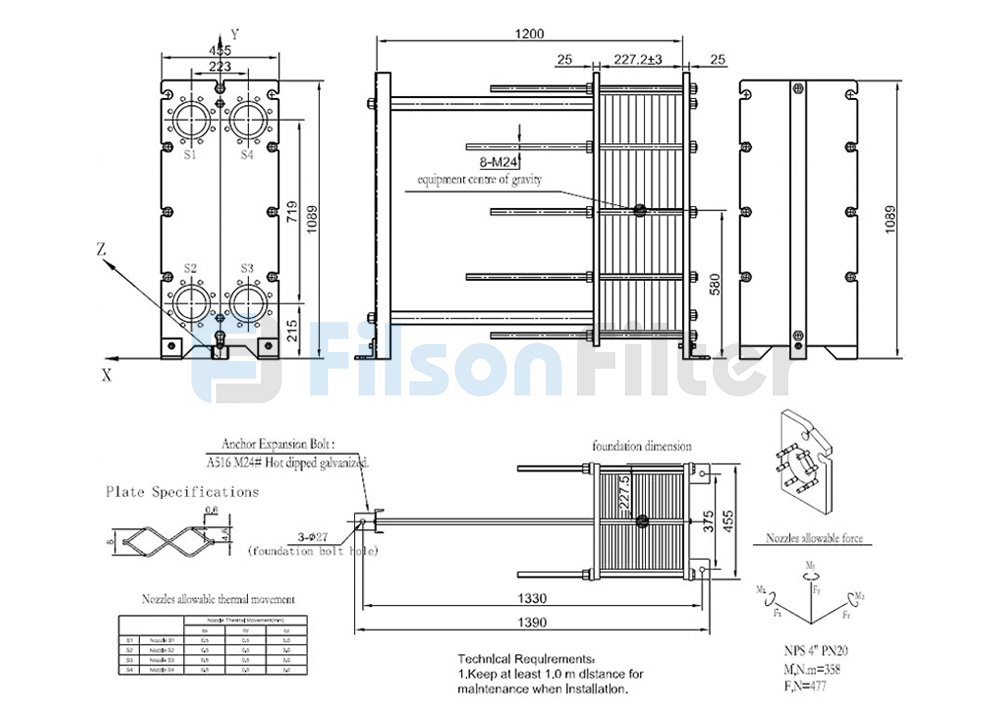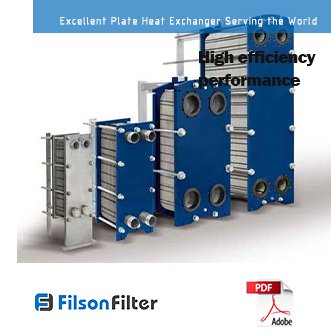Your Reliable Plate Heat Exchanger Supplier in China
Filson plate heat exchanger, also known as plate type heat exchanger, is another popular type of heat exchanger besides shell and tube heat exchanger. As all other heat exchangers, plate heat exchanger is used to transfer heat from one fluid to the other.
After over 20 years deep communication with customers all over the world, Filson knows customers needs better than our products, of course, we also pay a hundred percent effort to the design and manufacturing of plate heat exchanger.
Filson has given top priority to improving the quality of the plate heat exchanger to fit various applications by using lastest equipments and high-end technologies. Here, Filson promises to bring the best and superior plate heat exchanger for you.
Just send us your media type, request for plate number and size, required temperature and pressure, plate heat exchanger type and other specifications, you will get an instant quote from our experienced specialist within 8 working hours.
Filson Plate Heat Exchanger
Reasons for Choosing Filson Plate Heat Exchanger
- Perfessional
Since its founding in 2001, Filson has committed to establishing a complete line of export business. We produce the highest grade quality and excellent performance plate heat exchanger for factories and industries from over 30 countries around the world.
- Dedicated
Filson is regarded as an expert in the field of heat transferring. Though we have possessed a wide range of remarkable plate heat exchanger, we will never stop to develop new product and upgrade present system of production line.
- Fastidious
Filson is a quality-driven company and always puts customers in the first place. We have achieved continuous quality management improvements to meet and exceed customer requirements. And rigorous quality checks before delivery for every plate heat exchanger ensure its long lasting.
- Responsible
Except for our top-class plate heat exchanger, Filson serves customers in a really thoughtful and patient way from product design to full after sales service and support. And we guarantee you a long warranty period for all our plate heat exchangers.
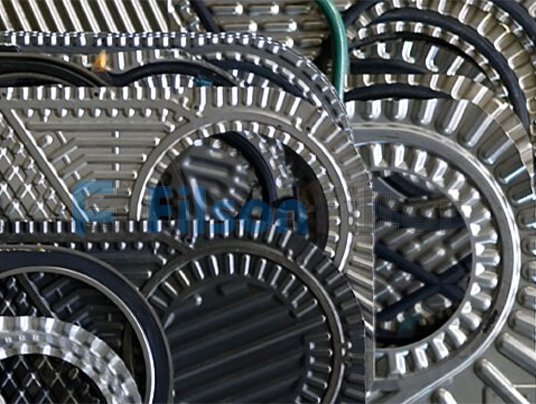
Filson: Versatile Plate Heat Exchanger Serving the World
Filson plate heat exchanger is an ideal solution for the heat transferring between liquid and liquid or liquid and gas. During the operation process, the two fluids absorb or release heat to finally reach a close temperature.
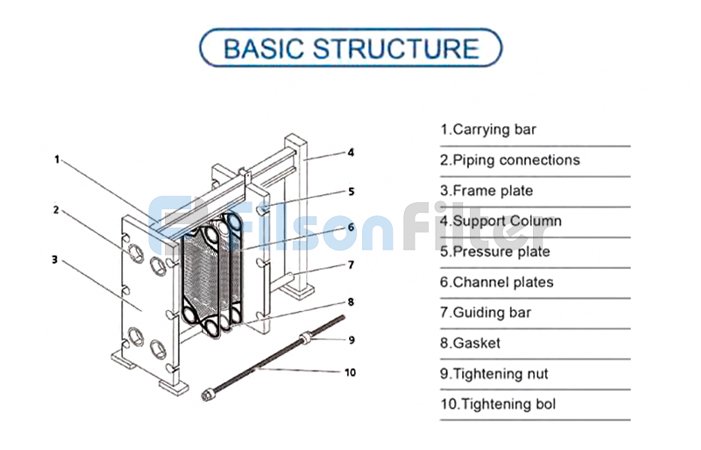
Filson plate heat exchanger is a new type of high-efficiency heat exchanger which is made of a series of metal sheets with certain corrugated shapes stacked on top of each other. A thin rectangular channel is formed between the plates and heat is exchanged through the plates.
In the case of same pressure loss and manufacturing material, the heat transfer coefficient of a Filson plate heat exchanger is 3-5 times higher and covers 1/3 area than that of a shell and tube heat exchanger and the heat recovery rate can be as high as 90% or more.

Filson chooses highly suitable metal materials to improve thermal conductivity of plate heat exchanger. Stainless steel is the most common material used in it. Besides, the next most widely used material is titanium. Carbon steel and aluminum is also available according to your needs.
Due to the good property of materials and sophisticated workmanship, Filson plate heat exchanger can be applied to a broad range of industries. The most common applications are for resin synthesis cooling, steelmaking process cooling, bleaching process heat recovery, etc.
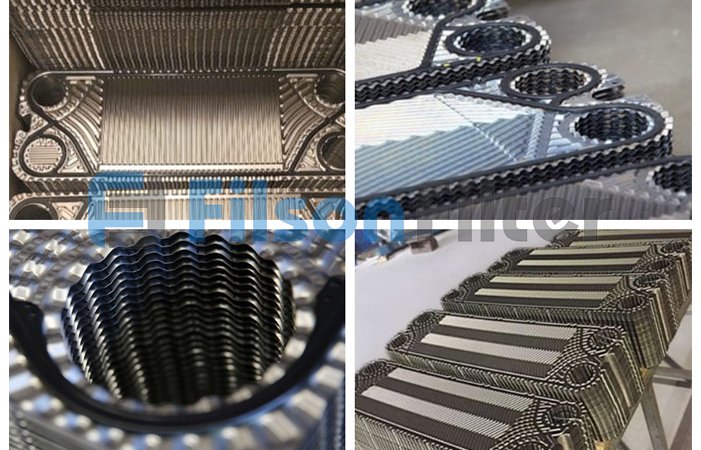
Filson possesses advanced technologies and standardized equipments to design and manufacture various types of plate heat exchanger. They are plate and frame heat exchanger, shell and plate heat exchanger, plate fin heat exchanger, pillow plate heat exchanger and many others.
According to different structures, Filson plate heat exchanger can be divided into four kinds: 1. removable plate heat exchanger, 2. welded plate heat exchanger, 3. spiral plate heat exchanger and 4. plate coil heat exchanger.
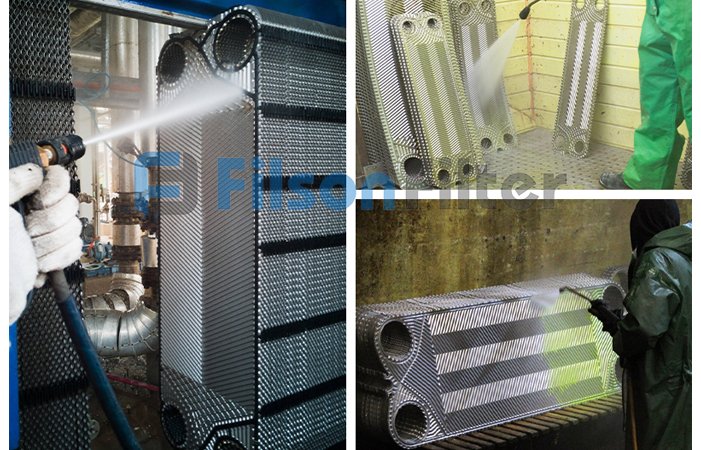
Filson plate heat exchanger has a simple and lightweight structure. The composition or the parts of plate type heat exchanger is extremely easy to understand. Usually, it consists of a series of heat transfer plate, sealing gaskets and pressure plates at both ends.
The plate plays an important role in a Filson plate heat exchanger. It decides the heat transfer efficiency of the whole device. Herringbone/herringbone-shaped corrugated plate and horizontal corrugated plate is the frequently-used plate type in a plate heat exchanger.
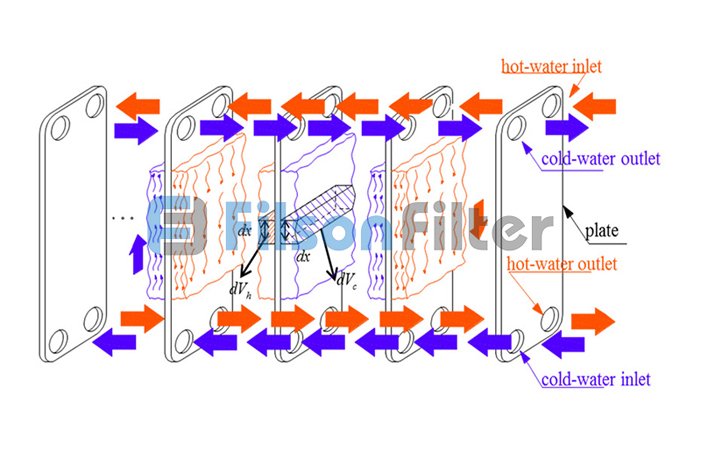
Generally, the plates of plate heat exchanger are designed into corrugated shape by Filson. It benefits a lot. This kind of design increases the flow rate of the fluids which indicates a high turbulence level to enhance the heat transfer efficiency. And the plates won’t be fouled easily because of the corrugation.
The gasket mainly acts as a seal between Filson heat exchanger plates. When select material of sealing gasket, you need take medias type into consideration. Commonly, the gasket is made of chemigum, EPDM(ethylene-propylene-diene monomer) and fluororubber.
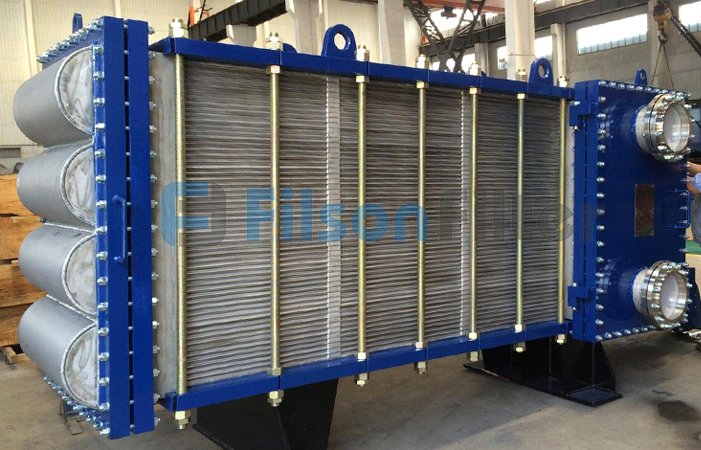
The pressure plates at the both ends of Filson plate heat exchanger are mainly used to clamp and fix all the heat transfer plate pieces to ensure that the fluid medium does not leak through the gap.
The main causes of plate heat exchanger leakage:
- Corrosion and penetration of heat exchanger plates
- Cracks on heat exchanger plates
- Uneven tightening of clamping bolts
- Extreme deformation of heat exchanger plates
- Broken or aged sealing gasket
- Uneven thickness of sealing gasket
- Deflection of sealing gasket
Seven points above show the main causes of plate heat exchanger leakage, these remind you to maintain and recondition your plate heat exchanger more often to ensure its normal operation. However, Filson guarantees you a better outgoing quality to reduce maintenance and save costs.
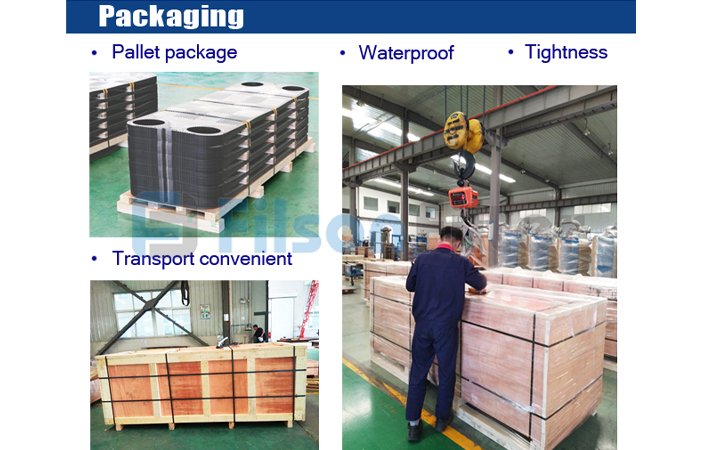
In brief, the advantages of Filson plate heat exchanger can be summarized as excellent corrosion resistance, antifouling surface, high resistance to temperature, compact structure design, reduced service costs and remarkable heat transfer efficiency.
All Filson plate heat exchangers are designed and manufactured according to customer requirements. With advanced software for thermal and mechanical calculations and standardized programs, we can verify the design parameters of your plate heat exchanger easily to meet your individual needs.
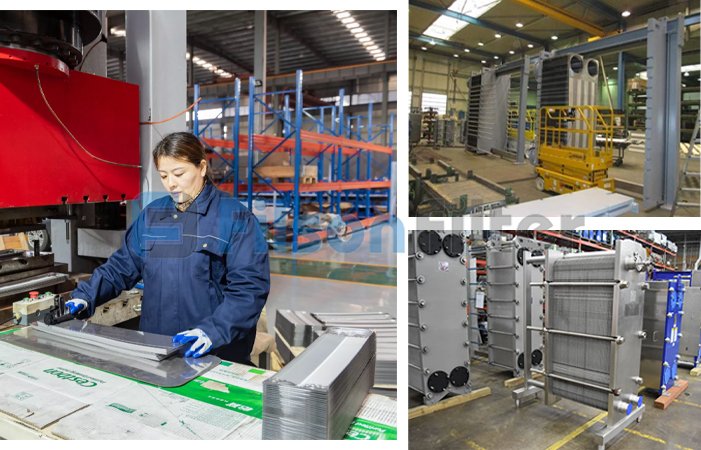
If you are looking for a suitable plate heat exchanger for your application, why not consider about Filson who is a heat exchanger expert with rich experience. We will never let you down in any aspects.
Looking forward to being your reliable business partner and premier plate heat exchanger supplier to help run your company better! Our engineering sales are always here and ready to help in 24/7/365.
Filson Plate Heat Exchanger Working Principle:
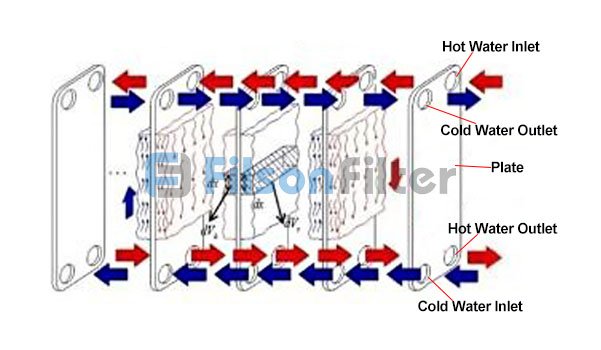
The heat exchange is carried out through the plates of a plate heat exchanger. Compare to conventional heat exchangers, the heat transfer coefficient is much higher under the same flow resistance and pump power consumption.
As one of the popular heat exchangers in the market today, plate heat exchanger creates a trend to replace shell and tube heat exchanger—the most frequently-used heat exchanger in some application ranges.
The plates are pressed into corrugated shape to increase the heat transfer area and rigidity. And it can make the fluid at low flow rate into the formation of turbulent flow in order to achieve the ideal effect and enhance heat transfer efficiency.
As shown in the figure, the four holes at the corner of the plate form the fluid distribution duct and drainage duct. Two kinds of heat exchange media flow into their respective channels forming counterflow or parallel flow through each plate for heat exchange.
Filson Plate Heat Exchanger Function:
- Increase contact area to enlarge heat transfer coefficient
- Optimize and control the whole energy system
- Serve a large amount of industrial applications
- Bring profits by saving energy
- Heat or cool a specific fluid
- Sterilize and disinfect
- Reduce waste energy and gas emission
Filson Plate Heat Exchanger Feature:
- High heat transfer efficiency
- Low thermal losses
- Compact and lightweight structure
- Small footprint to reduce working space
- Broad range of industrial applications
- Long service life
- Convenient disassembly and assembly to be cleaned easily
Filson Plate Heat Exchanger Specification:
- Material: stainless steel, carbon steel, titanium, aluminum, nickel or even graphite materials according to customer needs
- Media type: oil, water, air, gas
- Working temperature: -50 – 450℃(based on materials)
- Working pressure: 2.5 – 6.4MPa
- Plate thickness: 0.4 – 3mm
- Heat recovery efficiency: more than 90%
- Heat exchange area: 1 – 800㎡
- Color: grey, blue, silver, brown(up to customer requirements)
- Standard: ASME, ANSI, JIS, GB
Filson Plate Heat Exchanger Application:
- Chemical engineering
- Power plant
- Pharmaceuticals
- Food industry
- Metallurgical industry
- Machinery industry
- Paper industry
- Textile industry
- Oil and grease process
- Centralized heating
- Seawater desalination
- Geothermal utilization
- Solar energy utilization
Want more information about Filson plate heat exchanger? Or still have doubts on choosing the correct device for your application? Consult Filson today and our specialist is always waiting:
Call: +86-157 3695 8886
Email: sales@filsonfilters.com
Filson Plate Heat Exchanger FAQ:
Plate heat exchanger or plate type heat exchanger is a new type of high-efficiency heat exchanger made of a series of metal sheets with certain corrugated shapes stacked to each other.
A thin rectangular channel is formed between the various plates and heat exchange is carried out through the plates. Plate type heat exchanger is the ideal equipment for heat exchange between liquid-liquid and liquid-gas.
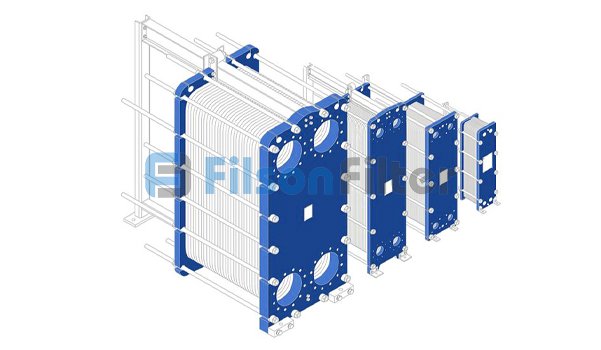
The most important and the most expensive part of a plate heat exchanger, of course, is its thermal plates. The plates can be made of metals, metal alloys or even graphite materials. The selection of the material is always depended on the industry you are going to apply to.
Besides plates, a plate heat exchanger has the following components:
- Sealing gaskets on the plates
- Frame plate(fixed plate)
- Pressure plate(movable plate)
- Upper and lower bars
- Screws for compressing the pack of plates
- End support
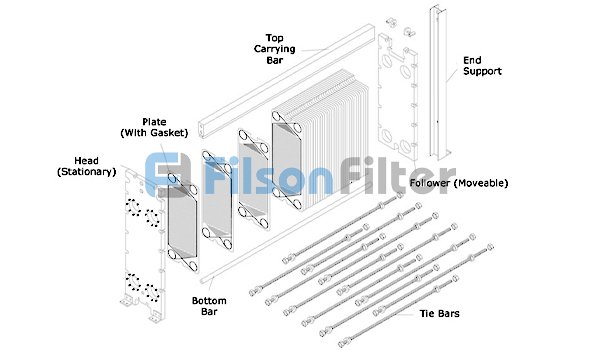
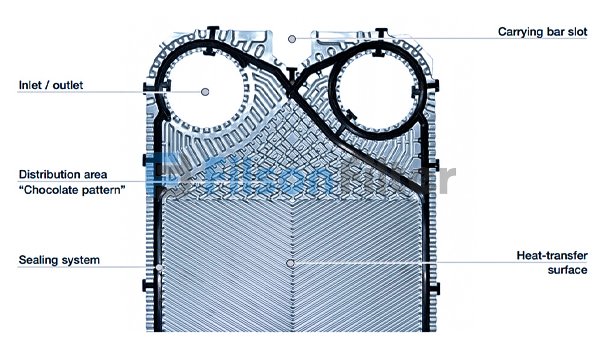
Plate heat exchanger consists of many thin and corrugated plates at certain intervals. The plates are sealed around by gaskets and overlapped with the frame and compression screws.
The four corner holes of the plates and gaskets form the distribution and collection tubes of fluid. And at the same time, a reasonable separation of hot and cold fluids is realized, so that the fluids pass through the flow channel on both sides of each plate. Then the heat exchange carries out.
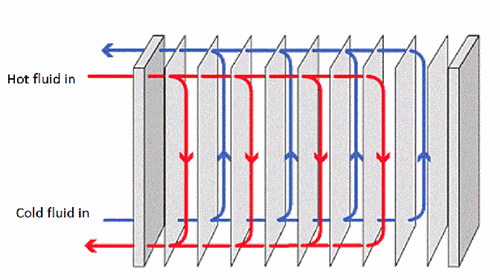
Plate heat exchanger has been widely used in metallurgy, mining, petroleum, chemical industry, electric power, medicine, food, chemical fiber, paper making, light textile, shipping, heating and other departments.
In addition, plate heat exchanger can be used for heating, cooling, evaporation, condensation, sterilization, waste heat recovery and other occasions.
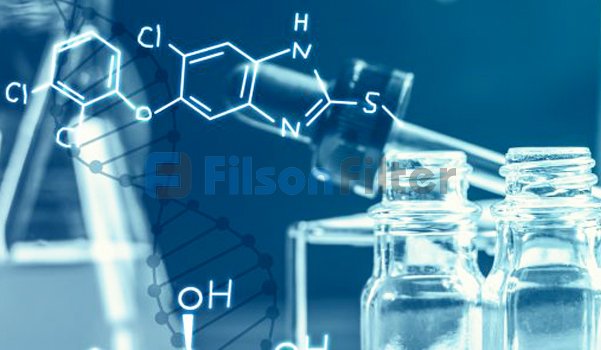
Plate heat exchanger is becoming popular and popular in the market today, it surely has lots of advantages of using a plate heat exchanger.
(1) High heat transfer coefficient
The flow channel of plate heat exchanger is small and narrow, the plate is corrugated and the cross-sectional changes are complex. These all lead to the constantly changes of the flow direction and flow velocity which increase the fluid disturbance. Thus it can reach turbulence at a very small flow rate to reach a high heat transfer coefficient.
(2) High adaptability
The design of plate heat exchanger allows it to achieve the required heat transfer area by increasing or decreasing the plates. A plate heat exchanger can be divided into several units and can be adapted to satisfy simultaneous heating or cooling between several fluids.
(3) Compact structure, small volume and less consumable materials
The heat transfer area of each cubic meter plate heat exchanger can reach 250㎡. And only about 15 kg of metal is required for each square meter of heat transfer surface.
(4) High heat exchange efficiency
High heat transfer coefficient and low metal consumption of the plate heat exchanger make the heat transfer efficiency up to 85% or more than 90%.
(5) Easy to disassemble, wash and repair
Plate heat exchanger has really simple structure — plates and frames, so after a period of use, you can easily remove the plates and wash them, or replace with a new one.
(6) Small possibility of scaling
Due to the large disturbance of flow, fouling is not easy to deposit. At the meantime, the plate is made of quality material, so there is little corrosion to make the plate scale.
(7) Competitive price
Filson plate heat exchanger is mainly formed with metal plates, such as stainless steel, carbon steel, titanium, aluminum, nickel. So the price of raw materials is lower comparing to the same metal tubes.
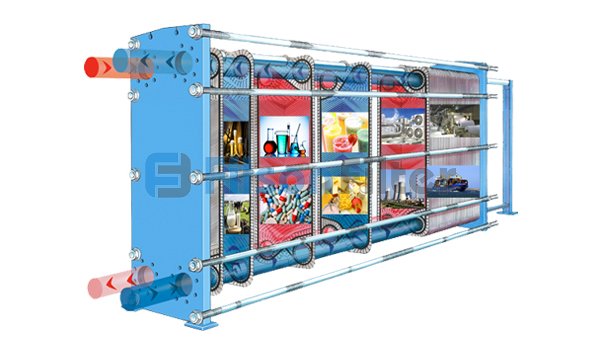
Though both plate type heat exchanger and shell and tube heat exchanger are frequently used in industrial applications, they still have many differences in distinct aspects.
1. Structure comparison
Shell and tube heat exchanger is the most widely used heat exchanger in chemical production at present. It mainly consists of shell, tube bundle, tube sheet, baffle, end cover and other elements.
Plate heat exchanger has a relatively simple structure. It mainly consists of plate, gaskets, upper and lower bars, frame plate, pressure plate and bolts.
2. Heat transfer performance comparison
Plate heat exchanger has higher heat transfer coefficiency for the turbulence. Generally, the coefficiency is considered to be 3 to 5 times of shell and tube type heat exchanger.
3. Volume comparison
Compare to shell and tube heat exchanger, plate type heat exchanger has a compact structure and smaller floor space. The heat exchange area per unit volume is 2 to 5 times that of shell and tube type.
Typically, there will be a maintenance site for the extracted tube bundle at the design part of a shell and tube heat exchanger, that’s one of the reason why it has larger volume than a plate type heat exchanger.
4. Process and design comparison
For a plate type heat exchanger, it is easy to change the heat exchange area or process combination.
You can add or reduce the plates casually to achieve the purpose of increasing or decreasing the heat exchange area. And if you want to change the plate arrangement or replace several plates to meet required effect, it also easy to realize.
However, the heat transfer area of a shell and tube heat exchanger is almost impossible to change, especially for a fixed tube sheet shell and tube heat exchanger.
5. Price comparison
When it comes to the factor that customers care about most, that must be the price. The plate heat exchanger costs about 40% to 60% lower than a shell and tube heat exchanger under the same heat exchange area and with the same manufacturing material.
Without doubt, different types of heat exchanger have different advantages and disadvantages, just choose the most suitable one to fit your specific application. By the way, shell and tube heat exchanger is also available to be provided by Filson.
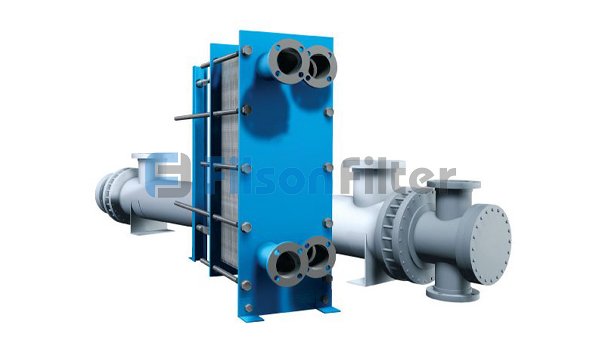
- Temperature and pressure limitations
This important limitation is related to the plate gaskets. Plate heat exchanger is sealed with gaskets. Its working pressure should generally not exceed 2.5 MPa and the medium temperature should be below 250℃, otherwise there is a risk of leakage.
However, if the gaskets are made of special materials, they may withstand temperature up to 450℃. Or maybe welding and brazing the plates to each other is also a good choice for operation under more tough conditions. But it surely is more expensive.
- High pressure drop
The space or the channel between the corrugated plates is small and narrow. When the fluids flow between the plates, the pressure drop will be high due to the friction, then it may increase the pumping cost.
- Leakage possibility
The metal plates sometimes will be worn because of the friction and will form the small holes that are difficult to locate. That increases the leakage possibility. So the regular maintenance is necessary. (The possible causes of leakage are listed in the body part.)
- High material costs
If you choose titanium as the manufacturing material of your plate heat exchanger, the initial cost is high. And since the titanium is a noble metal with good property, other components involving in the plate heat exchanger may be corroded.
- Congestion problem
As the channel between the plates is very narrow, generally only 2 to 5mm, when the heat exchange medium contains larger particles or fiber material, it is easy to lead to the congestion problem.
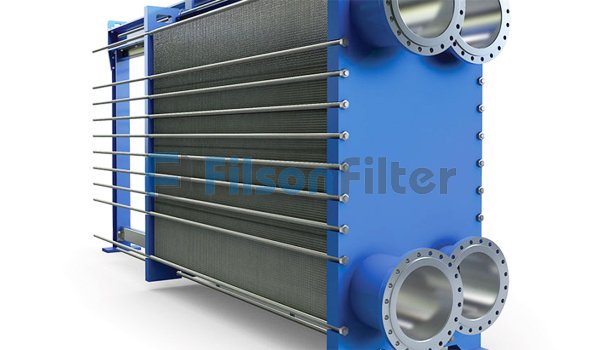
Filson, as an expert in the field of heat exchange, possesses a full type of plate heat exchanger. There are four main types of plate heat exchanger: gasketed plate heat exchanger, welded plate heat exchanger, semi-welded plate heat exchanger and brazed plate heat exchanger.
Also, some other types of plate heat exchanger can be found at Filson:
- Plate and frame heat exchanger
- Plate fin heat exchanger
- Pillow plate heat exchanger
- Plate coil heat exchanger
- Spiral plate heat exchanger
- Plate and shell heat exchanger
……
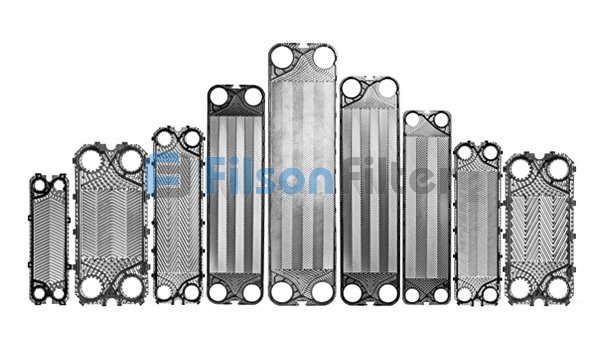
There are three flow types in the heat exchanger, they are:
- Parallel flow
- Cross flow
- Counter flow
Among which counter flow is the most efficient comparing to the other two types. For parallel flow, the fluids pass through the heat exchanger in the same direction. However, as for counter flow, the fluids flow against each other in opposite directions.
Counter flow creates a more uniform temperature difference between the fluids through the entire heat exchanger. Further, since the temperature difference is more even, the heat exchange rate is also more consistent.
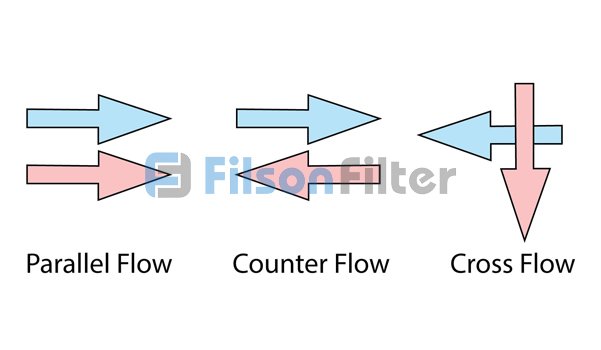
When choose the plate heat exchanger, you should take many factors into consideration, like the applications you are using a heat exchanger in, the fluids characteristics, working pressure and temperature…
Filson has a professional team of engineers, workers and sales with rich experience in heat exchanger. So you don’t need to worry about how to select the right plate heat exchanger for your industry, just send your specifications or requirements, Filson will solve your problems.
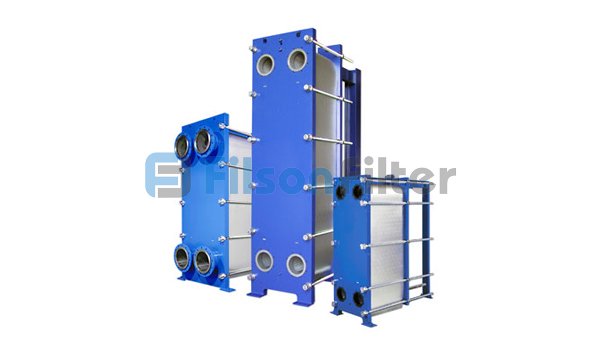
Plate heat exchanger, a corrugated high-efficiency heat exchanger, is now commonly used in various industries. But long-term use will cause fouling, so you are recommended to clean your plate heat exchanger after a period of use.
Some substances after heating will be decomposed into calcium carbonate—a kind of deposit which will precipitate in the heat exchanger. Then a thick layer of scale will be formed over time. At the same time, loose and non-fixed shape magnesium hydroxide is generated which makes the formation of scale more easily.
When clean the plate heat exchanger, you are supposed to disassemble the frame and plates. Its cleaning method is to use acidic cleaning agent for cleaning.
At present, the using cleaning agents are mostly organic or inorganic acids. Acid cleaning can effectively help remove scale because acid can dissolve and destroy the structure of the scale, so that you can achieve a good cleaning effect.
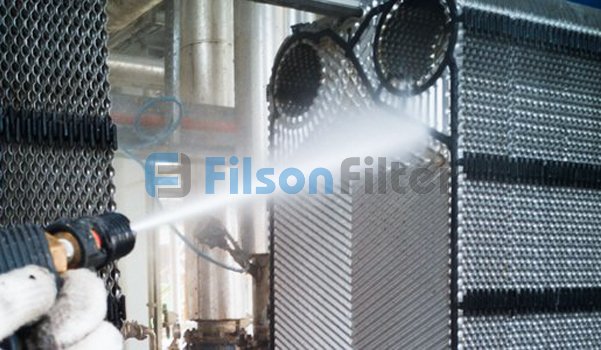
It depends.
The life of a plate heat exchanger is determined by the application. In general, a plate heat exchanger can last for more than 8 years.
But in the most common chemical processing industry, the plate heat exchanger always works under the tough conditions with high temperature, pressure and corrosion, thus those equipments has a relatively shorter lifespan of 2 or 3 years.
Even in some heavy duty factories, they change plate heat exchanger once a year.
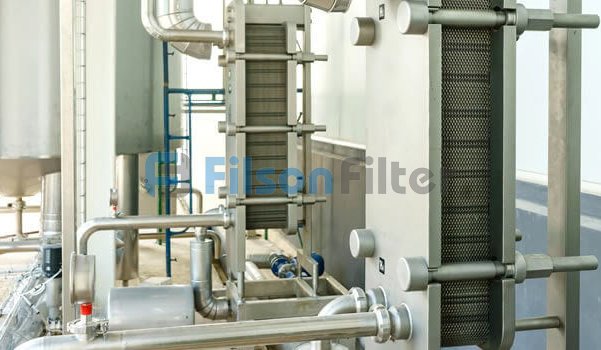
Generally speaking, the minimum temperature difference between the two sides of a plate heat exchanger is 5 to 2℃.
Sometimes for a plate heat exchanger, 1℃ temperature difference between the two sides can be realized. But it has to meet a certain condition, that is, the heat transfer area should be large enough and the water flow of the cold end should also be as large as possible.

Of course not any type of media can be used in a plate heat exchanger.
As plate heat exchanger is an ideal device for liquid to liquid and liquid to gas heat exchange, the type of media can be water, oil, milk, cosmetics, pharmaceuticals and other medias. But you’d better not use viscous fluids in a plate heat exchanger.
If you are not sure that whether the media is available in your plate heat exchanger, just feel free to inquire our professional specialists. They will solve your problems patiently.
